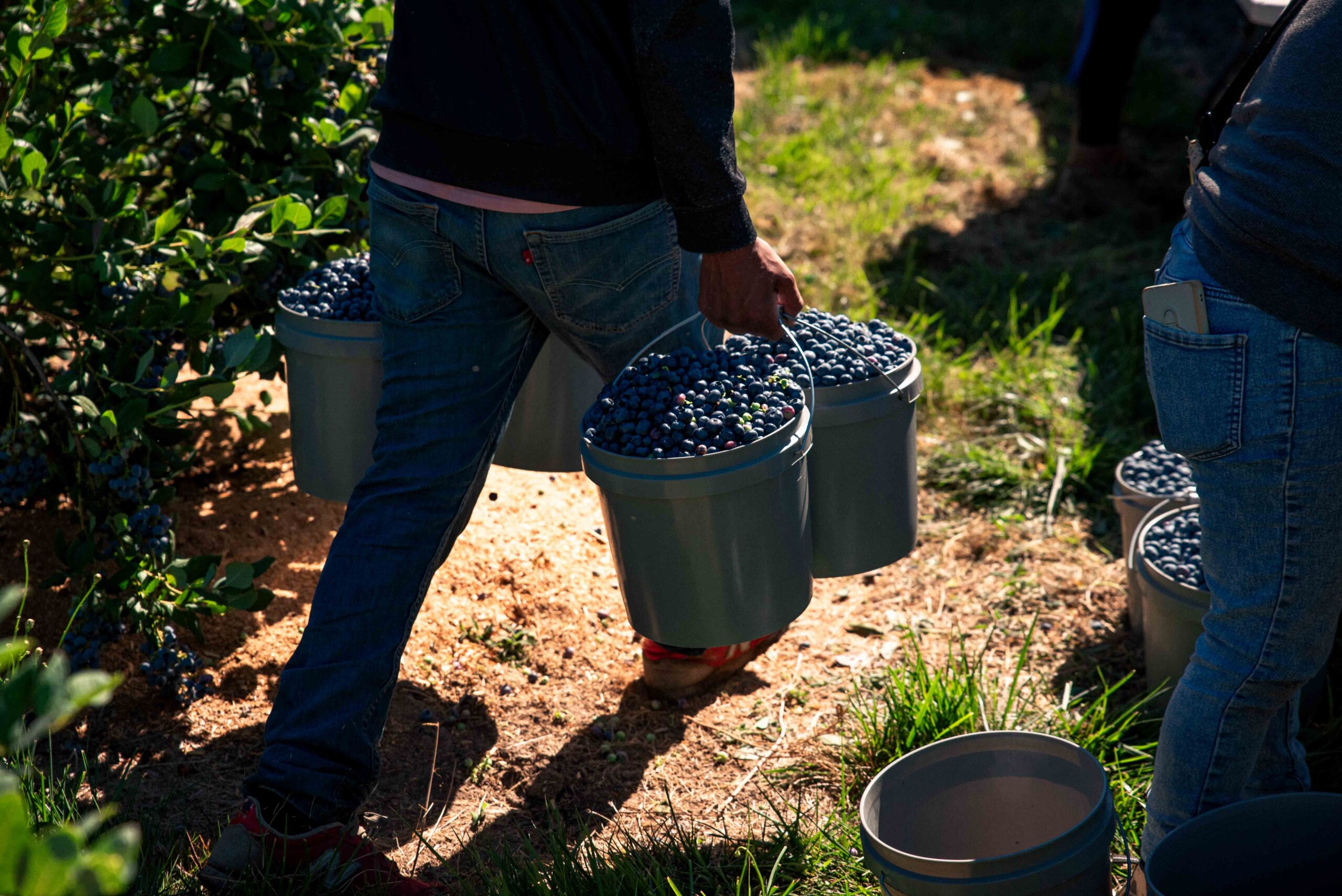Whether you’re baking a beautiful breakfast treat or snacking straight from the container, there’s nothing quite like the burst or flavor from a berry picked at its peak. This naturally leads to one of our most asked questions: when are blueberries in season?
Why Blueberry Season Matters
Blueberries are famously known for their fleeting freshness. Unlike fruits that ripen after harvest, blueberries are best when they’re allowed to fully mature on the bush. Once picked, they don’t get sweeter; they can only soften or fade. Which means, timing matters. The sweet, juicy berries we love most come during the true blueberry season.
At Berry Fresh, we ensure peak quality year-round by sourcing blueberries from our own farms and trusted grower partners across North and South America, as well as Morocco. This strategic approach allows us to deliver fresh, flavorful berries even when local harvests are out of season.
The peak of the season is also when blueberries are richest in healthy nutrients. Blueberries are bursting with goodness, packed with Vitamin C, Vitamin K, and high levels of antioxidants. When these berries are allowed to fully develop during the sunny days of their growing season, they maximize their nutritional potency.
Blueberry Season by Region
Because blueberry plants are sensitive to climate, region plays a big role in when you’ll see fresh blueberries locally. The season begins in the warmer Southern states and gradually progresses northward and westward as the summer progresses.
In the warmest parts of the United States, such as Florida or southern Georgia, harvest kicks off as early as April and continues through early June. As you move north or into cooler regions, the season shifts later. In the Midwest and Northeast, including states such as Michigan and New Jersey, blueberries are typically ripe in July through early September.
On the West Coast, the extensive growing regions in California, Oregon, and Washington have a long harvest season. California begins its harvest in early May, and the harvest in the cooler Pacific Northwest states continues late into the year. Some of those states will ship fresh blueberries out well into October.
When the North American season wraps up in the fall, the global supply chain steps in to maintain that year-round availability. The calendar flips, and the harvest moves to the Southern Hemisphere. Countries like Chile, Peru, Mexico, and Morocco begin their summer and send fresh berries north from November through March, to fill the gap of the North American winter months.
Peak Months for Blueberries
Even though blueberry season in the U.S. runs from April to October, the best berries arrive in the heart of the summer. This is what we call peak season, when the berries are their juiciest and most abundant.
If you had to circle one month on the calendar as, “blueberry peak,” July is your champion… it’s even recognized as National Blueberry Month in the U.S.! In many growing regions, including our Berry Fresh Farm in Oregon, July marks the heart of draper season, where highbush blueberries are at their peak ripeness. That’s when the largest volume of berries ripens and markets are full of fresh pints.

In the early season (May-June), harvest is lighter, especially in southern and mid-Atlantic regions. Later in the summer and early fall (August-September), production begins to taper off and only certain regions with suitable climates or late-variety bushes continue to supply blueberries to markets.
Seasonality in Wild vs. Cultivated Blueberries
When talking about all things blueberry season, it’s important to distinguish between the two primary types: cultivated and wild, as their growing habits and seasonality are quite different.
Cultivated Blueberries, often called highbush berries, are the large, plump, and uniformly sized berries commonly found in the produce aisle. These are grown on managed farms and tend to have a longer harvesting window. Their season can stretch from spring into early fall, depending on the region. Their prolonged season is optimized for commercial shipping and availability.
Wild Blueberries, also known as lowbush berries, are more delicate and have a shorter growing season. In the United States, most wild blueberries are harvested in Maine during the late summer. They’re actually not grown using the help of farmers, rather, they grow naturally and are managed in glacial barrens.
How to Tell if Blueberries Are in Season at Your Local Store
Even when blueberries are available year-round in supermarkets, there are clues to whether you’re getting truly in-season berries. First, color is key. Ripe blueberries should be uniformly deep blue with a delicate, dusty-white coating called a “bloom.” This natural waxy protective layer indicates the berries have been recently picked, signifying peak freshness. If you spot green or red tinges, those berries were likely picked too early and won’t fully sweeten.
Second, firmness matters. Look for plump, firm berries and not soft or mushy ones. That firmness suggests that they were handled well and harvested appropriately.
During the North American harvest (April-October), look for a label that says “Product of U.S.A.” If the label reads Chile, Peru, or Mexico, remember that you are enjoying berries imported from the Southern Hemisphere, which helps sustain the year-round supply.
No matter the time of year, there’s a delicious blueberry waiting for you. By paying attention to where your berries come from and when they are harvested, you’ll know that you’re always selecting the best and freshest berries available. Berry Fresh blueberries are picked at the peak of ripeness for the sweetest, juiciest flavor in every bite. Grown with care and delivered fresh, they’re the perfect pick for snacking, baking, or blending, all year round. Find Berry Fresh blueberries at a store near you!

